-
solutinos
-
Hire
Frontend Developer
Backend Developer
-
NodeJS Developer
-
Java Developer
-
Django Developer
-
Spring Boot Developer
-
Python Developer
-
Golang Developer
-
Ruby on Rails Developer
-
Laravel Developer
-
.NET Developer
Technology
-
Flutter Developer
-
React Native Developer
-
Xamarin Developer
-
Kotlin Developer
-
Cross-Platform Developer
-
Swift Developer
-
MongoDB Developer
-
C Developer
-
Smart Contract Developers
Cloud
-
-
Services
Mobile Development
Web Development
- Work
-
Multi Services App
-
Food Delivery App
-
Grocery Delivery App
-
Taxi Cab Booking App
-
Multi Services App
-
OTT Platform APP
-
Social Media APP
-
Freelance Service App
-
Car Rental App
-
Medicine Delivery App
-
Liquor Delivery App
-
Sports Betting App
-
Online Coupon App
-
eLearning App
-
Logistics & Transportation App
-
Courier Delivery App
-
On-Demand Real Estate App
-
E-Wallet APP
-
Online Dating App
-
Handyman Services App
-
-
Process
-
Company
Did you know that you could improve your operational efficiency or new product quality with one simple trick?
How?
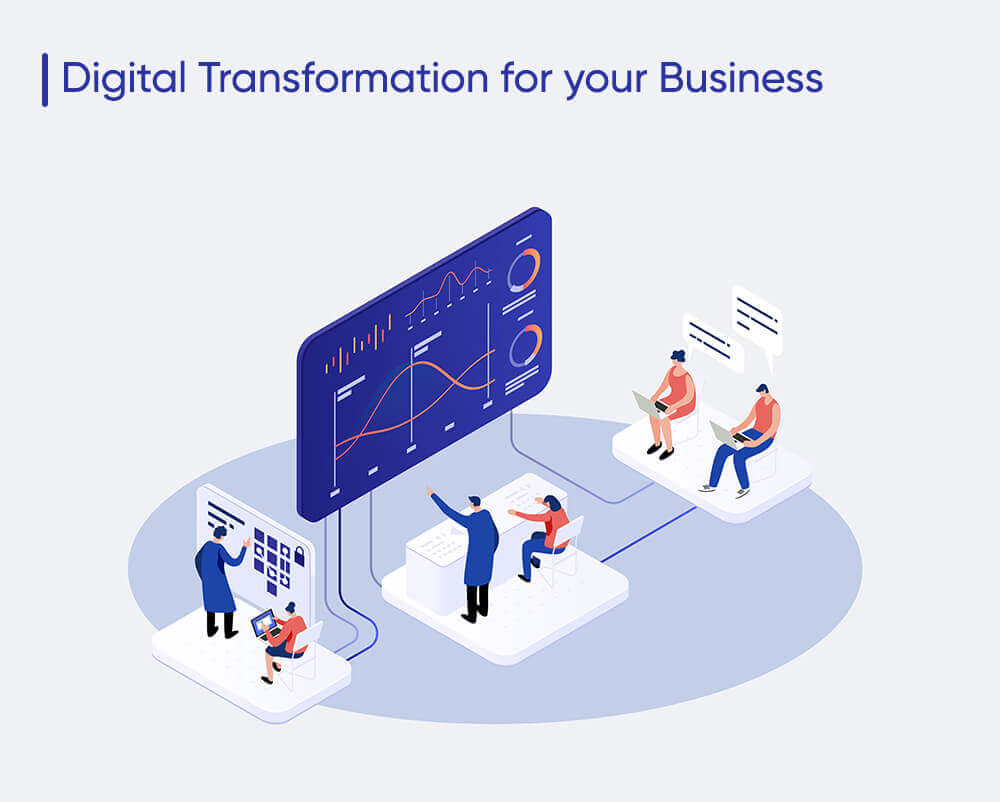
For those of you who are new to this, we understand that it could be a little complex. If you were running an offline venture, implementing obsolete operational practices or were generating revenues through age-old business models, this write up is for you.
We’re sure that by the end of the post, you’ll have a better understanding of what the concept is and how you could make the best use of it for your transformation of business.
So, let’s get started.
What Is Digital Transformation?
Digital transformation is both generic and a specific concept at the same time. It’s a broad term that describes the incorporation of technology into your business operations to enhance and optimize several aspects of it.
According to Gartner, digital business transformation is anything related to technology such as IT modernization like artificial intelligence development or cloud computing to even the invention of new-age business models.
If we were to explain enterprise digital transformation through pop culture references, imagine the quote from Fight Club, “What improves your quality of business through technology only makes you stronger.”
“ What improves your quality of business through technology only makes you stronger. ”
Technology transformation could be as complex as bringing in automation to complete your web and mobile app development process or as simple as switching to a CMS or a CRM to fill out and send your invoices. If we are talking digital transformation in manufacturing, you are eliminating the need for manpower, reducing the time taken to execute a task through a portal or a system, and restricting the creeping in of errors, you are implementing business transformation techniques.
Why Is It Inevitable In Today’s Business?
Digital transformation is inevitable in today’s scenario for just one primary purpose – for business sustenance. If the companies out there today need to stay afloat, grow, make profits, have the best minds in the industry and do more, they need digitalization strategies practices in place.
This is also fueled by the evolution of technology in other aspects and walks of life. Consumers out there are experiencing the best of technologies and gadgets and in turn are expecting more out of brands and businesses. This is creating a rift in consumer behavior that is only changing dynamically.
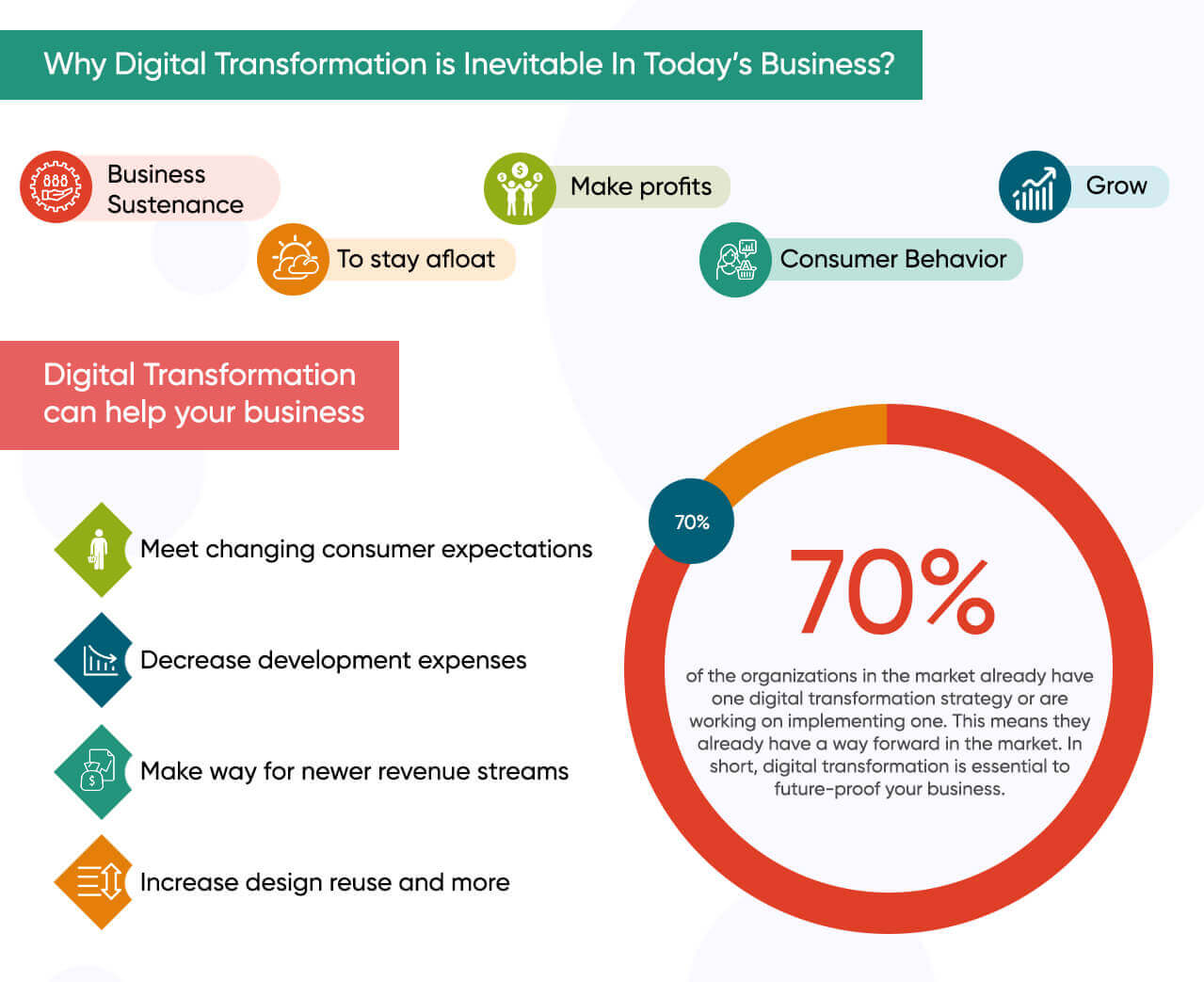
As this gap continues to expand, what can only bridge it is digital transformation. Like the statistics we mentioned at the start of the write up, digital transformation contributes to a lot of good things. Let’s see benefit of digital transformation.
According to Finance Online, digital transformation can help your business –
- Meet changing consumer expectations
- Decrease development expenses
- Make way for newer revenue streams
- Increase design reuse and more
70% of the organizations in the market already have one digital transformation strategy or are working on implementing one. This means they already have a way forward in the market.
In short, digital transformation is essential to future-proof your business.
The Role Of Technology In Digital Transformation
Technology stands as the fulcrum of digital transformation. It’s not digital transformation if your business does not implement a single element of technology into its practice. However, this also means that the implementation should be meaningful and serve a purpose.
It wouldn’t classify as digital transformation if you work on a notepad on your desktop to mark your entries and end up using a calculator to manually tally your balances. Meaningful digital transformation is what removes obsolete operational strategies, brings in newer systems and practices and improves your quality of output and delivery.
How effective digital transformation would turn out to be boils down to your business requirements, its niche, market segment, number of employees and other factors. That’s why we mentioned digital transformation as a both specific and generic concept.
What worked for a jewelry shop owner in terms of digitization need not work for a printing press owner? Both come from different market segments and have their own set of challenges and requirements.
Though technology is the key, how it is implemented and what purpose it solves matters.
Holistic Digital Transformation
Digital transformation is not just a solution to a fragment of your operational concerns. It is in fact an extensive solution that could improve the overall operations of your business. However, not all companies view digital transformation as a comprehensive solution. They are mostly seen as patches to any glitches they would face at that instance of time.
But when the reality is that digital capabilities are actually limitless and can bring about mammoth changes to the ways your business functions and runs.
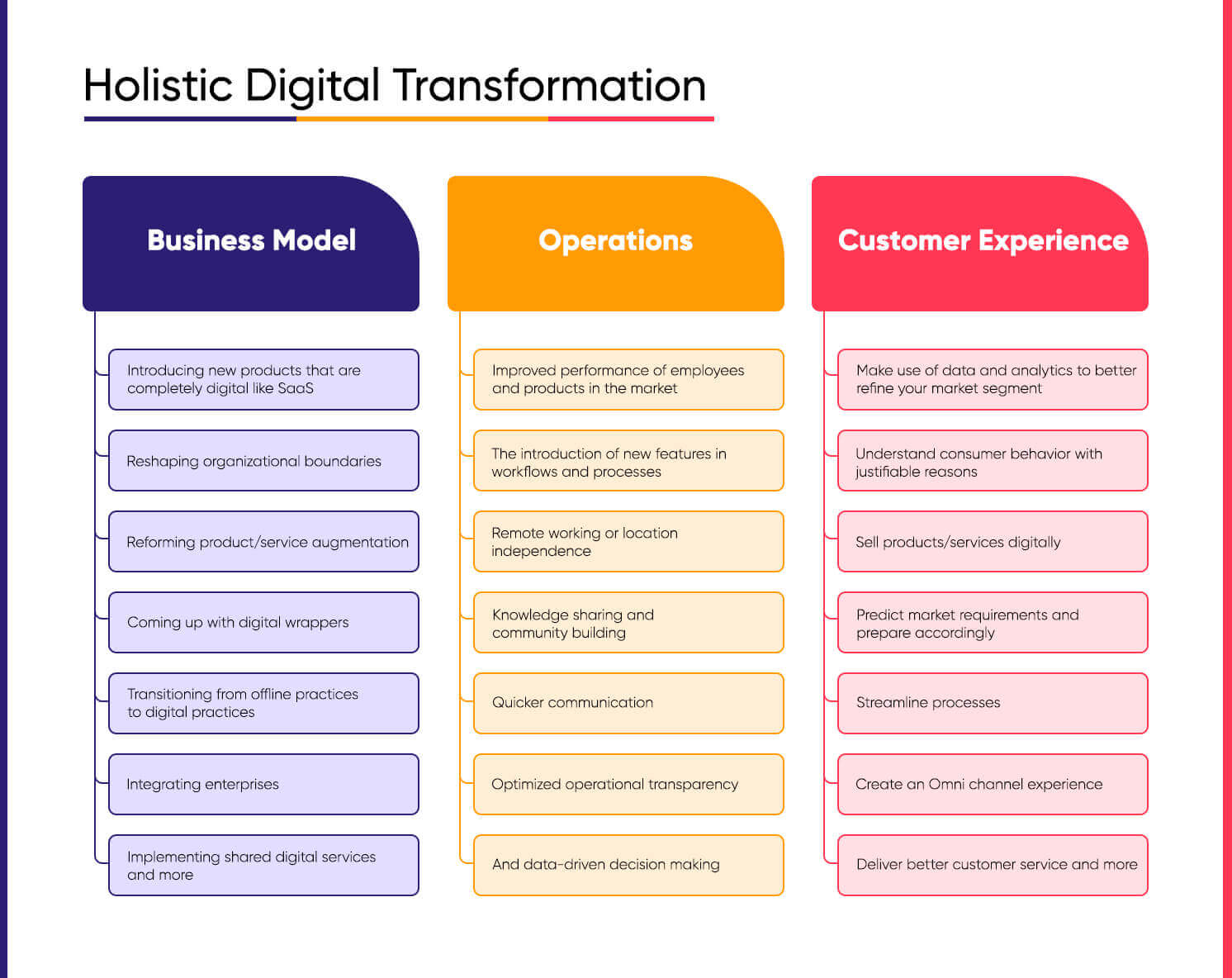
With proper research and analysis, you could bring in digital infrastructure to transform the three vital aspects of your business –
- Business model
- Operations
- And Customer experience
Let’s refine them further.
Business Model
When you implement digital transformation concepts, you could influence and reform diverse aspects of business model such as –
- Introducing new products that are completely digital like SaaS
- Reshaping organizational boundaries
- Reforming product/service augmentation
- Coming up with digital wrappers
- Transitioning from offline practices to digital practices
- Integrating enterprises
- Implementing shared digital services and more
Operations
Digital transformation will pave the way for –
- Improved performance of employees and products in the market
- The introduction of new features in workflows and processes
- Remote working or location independence
- Knowledge sharing and community building
- Quicker communication
- Optimized operational transparency
- And data-driven decision making
Customer Experience
Probably the most important aspect of running a business, digital transformation can help your business –
- Make use of data and analytics to better refine your market segment
- Understand consumer behavior with justifiable reasons
- Sell products/services digitally
- Predict market requirements and prepare accordingly
- Streamline processes
- Create an omnichannel experience
- Deliver better customer service and more
How Digital Transformation Can Reshape the Aspects Of Modern Enterprises
Digitization can extensively reshape, reinvent and reform several aspects of modern enterprises. To make it clear, McKinsey analysis has come up with a very effective chart that explains the cycle.
We have elaborated the cycle starting with product and service innovation below.
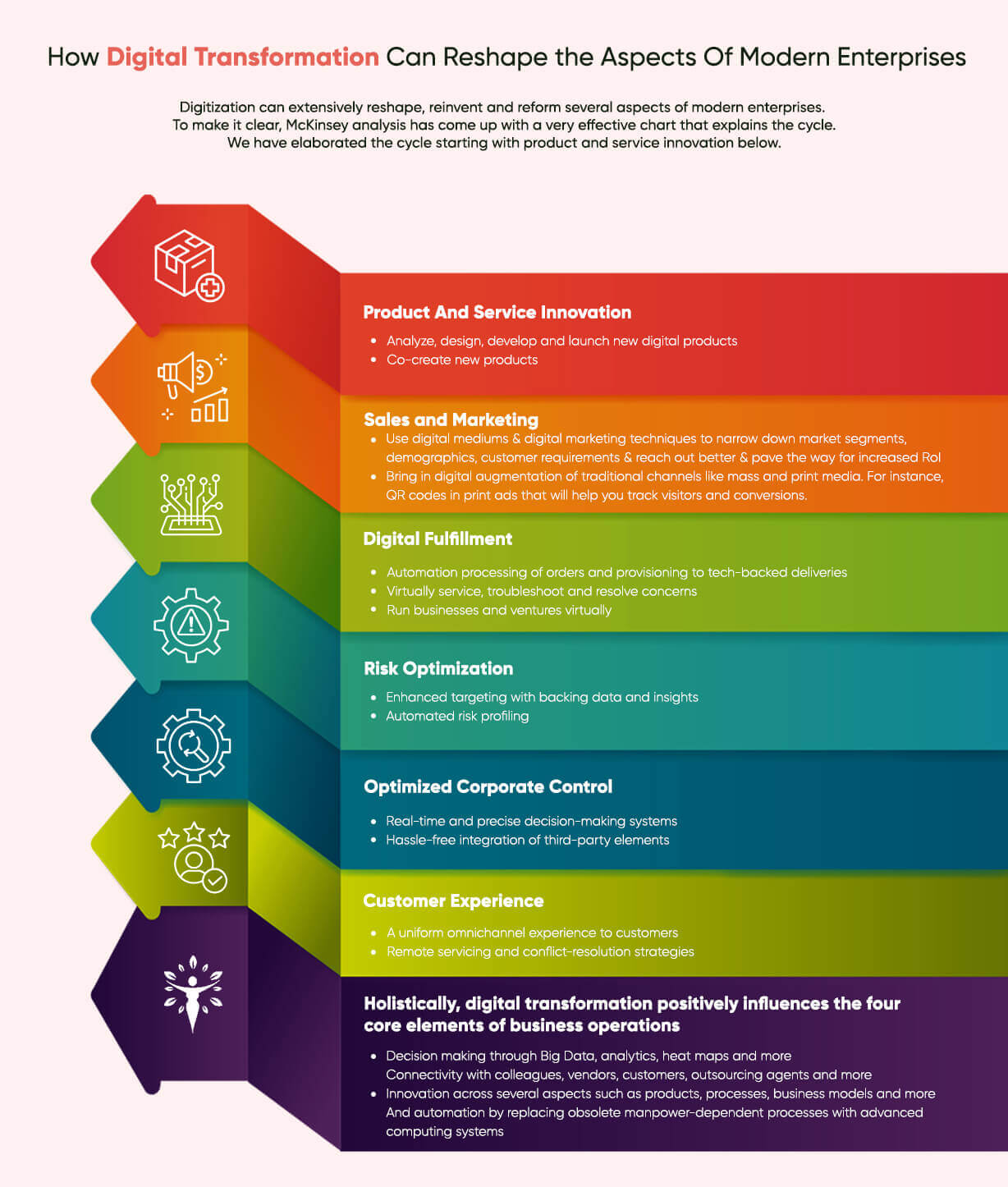
Product And Service Innovation
- Analyze, design, develop and launch new digital products
- Co-create new products
Sales and Marketing
- Use digital mediums and digital marketing techniques to narrow down market segments, demographics, customer requirements and reach out better and pave the way for increased RoI
- Bring in digital augmentation of traditional channels like mass and print media. For instance, QR codes in print ads that will help you track visitors and conversions.
Quality of End Products
- Automation processing of orders and provisioning to tech-backed deliveries
- Virtually service, troubleshoot and resolve concerns
- Run businesses and ventures virtually
Risk Optimization
- Enhanced targeting with backing data and insights
- Automated risk profiling
Optimized Corporate Control
- Real-time and precise decision-making systems
- Hassle-free integration of third-party elements
Customer Experience
- A uniform omnichannel experience to customers
- Remote servicing and conflict-resolution strategies
Holistically, digital transformation positively influences the four core elements of business operations –
- Decision making through Big Data, analytics, heat maps and more
- Connectivity with colleagues, vendors, customers, outsourcing agents and more
- Innovation across several aspects such as products, processes, business models and more
- And automation by replacing obsolete manpower-dependent processes with advanced computing systems
Digital Transformation Across Industries
Digital transformation is not just restricted to one industry or market segment. Though it is immensely technology-driven, it is never meant for just one industry. Like we mentioned, how you bring in digital transformation depends on your business goals and how you would like to simplify processes and solve concerns.
A few years ago, who would have thought that digital transformation in transportation would end up reforming the entire way we hire cabs and taxis. Or, even one of the oldest forms of business such as the food and beverage sector underwent a massive digital transformation to now deliver delicacies at people’s doorsteps.
There are digital transformation in healthcare, manufacturing, assembling, IT services and any business or segment you can think of.
11 Real-world Examples Of How Digital Transformation Impacted Business Performance
Any concept becomes a substantial model when you not just offer statements and insights but present real-world case studies. To help you get a better idea of how digital transformation actually helps businesses, here are some proven examples.
IKEA And Revenue Maximization

One of the pioneer furniture super-chain IKEA makes use of technology in a myriad of ways to influence diverse aspects of its business. Through digitization, IKEA uses just 1% of the commercial supply of wood in the world to design and roll out its furniture. Thanks to this, it makes way for reduced wastage, maximized revenue, value deliverance to customers and environmental sustainability.
Nike’s Way Of Embracing Technology
To deliver a better experience to its users and push sales, Nike went mobile-first and offered several apps to provide an immersive experience to customers. Nike+ and SNKRS are two prominent apps available for users today. These apps are feature-rich and offer personalized services to customers such as in-store rewards, loyalty programs and more.
When we are learning about digital transformation, it’s equally important to learn from brand debacles. The same sneakers company that made it big with its mobile apps campaigns was the one to fumble in the wearables market, where inadequate research and factors consideration made it trail behind the likes of FitBit and Apple in the segment.
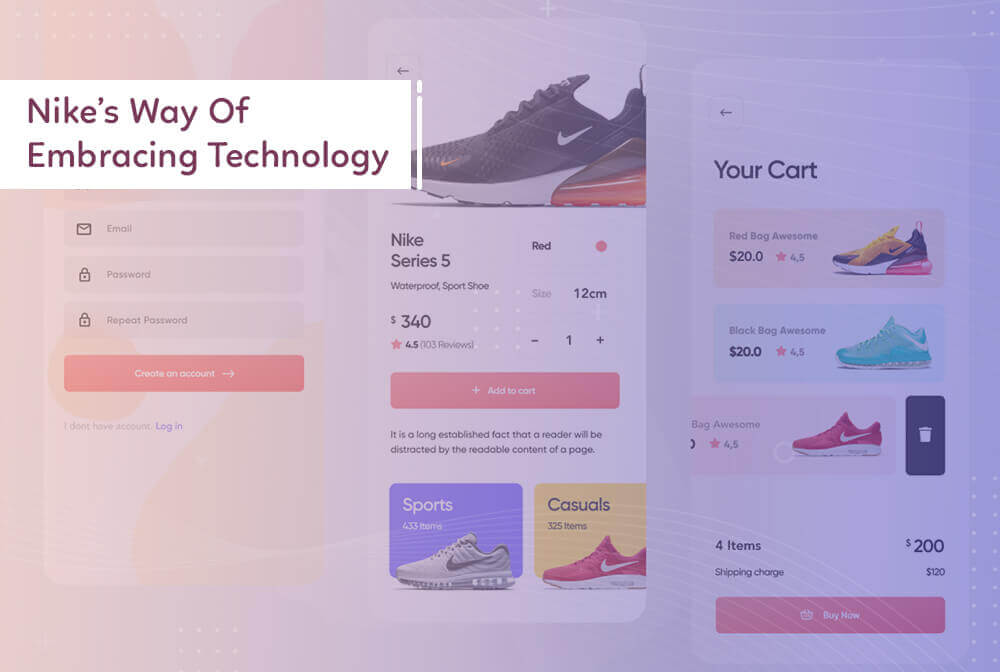
Nike’s Supply-Chain Optimization
Nike also optimized its inventory management and supply-chain mechanisms with the help of digital transformation. Through RFID tracking mechanisms, Nike gathered data from all possible touchpoints to maximize efficiency and revenue. This approach clearly shows that digital transformation can be adopted to not just one face of the operations but any aspect of running a business.
Domino’s And It’s Slice of Digital Transformation
There was a time when Domino’s Pizza was not the leading pizza chain in the market. It succumbed to increasing competition at one point and rolled out the prominent 30 Minutes or Free campaign. In this the pizza chain would offer customers pizza for free if they did not get their pizzas delivered within 30 minutes.
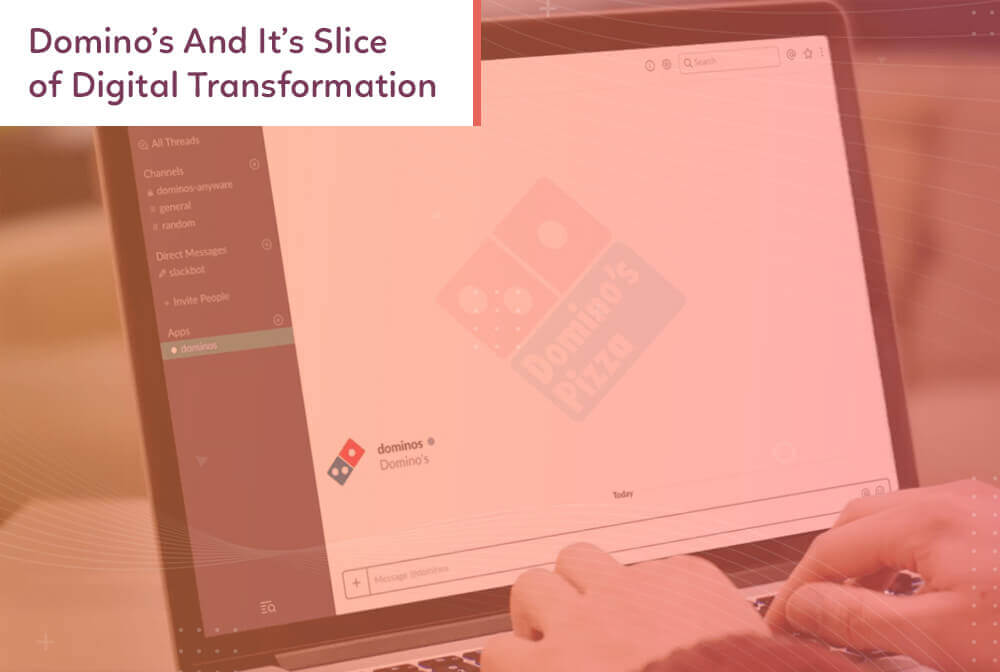
Though intriguing, the concept soon became redundant and it was time for the company to go for digital transformation. By going the ECommerce way, Domino’s Pizza carved a niche for itself in the industry.
Domino’s Pizza no longer identifies itself as a pizza company but an Ecommerce company. People can order pizzas on the go from different mediums.
Randy’s CMS Upgrade
The prominent seller of aftermarket drivetrain products – Randy’s – was experiencing trouble in the form of slow website load time. Having over 20,000 products in its catalogue, Randy’s search engine workflow took its own sweet time to throw search results to customers.

Besides, customers could look for products through product numbers or simple descriptions. Even categories were limited and there were no adequate details that would help visitors make a purchasing decision.
Its adoption of digital transformation strategies allowed the company to feature advanced search mechanisms that simplified everything to customers. They had more categories to explore, the website became faster and more. There was also a predictive search enabled for customers who only partially knew what they were searching for.
In fact, its extensive inclusions include –
- Information on stock and products availability was made visible to both online/guest visitors.
- A chat facility was enabled for consumers to talk with experts
- Device/model compatibility was enabled for customers to know if their purchase is compatible with any associated specifications
- Signing in options was toggled on all pages and they could retrieve information such as order history, favorites, shipping options, payment methods, shipment tracking, credit scores, saved quotations, and more.
Mentoring Minds Digital Adoption
Mentoring Minds is a publishing house that enables K-12 teachers to get all the resources and materials they need to create a positive impact in the lives of students. However, there were several challenges in this that could be tackled only by technology.

Their user-base comprises teachers who could be technologically challenged. Mentoring Minds has to remove this barrier and make way for a user-friendly interface. It achieved this through a simplified CMS that compiled everything they needed in one place.
This new interface allowed diverse professionals associated in the company to come together and do their job at once. For instance, admins could take care of operations, graphic designers could upload illustrations and graphics, writers could build and upload educational content, questions and more.
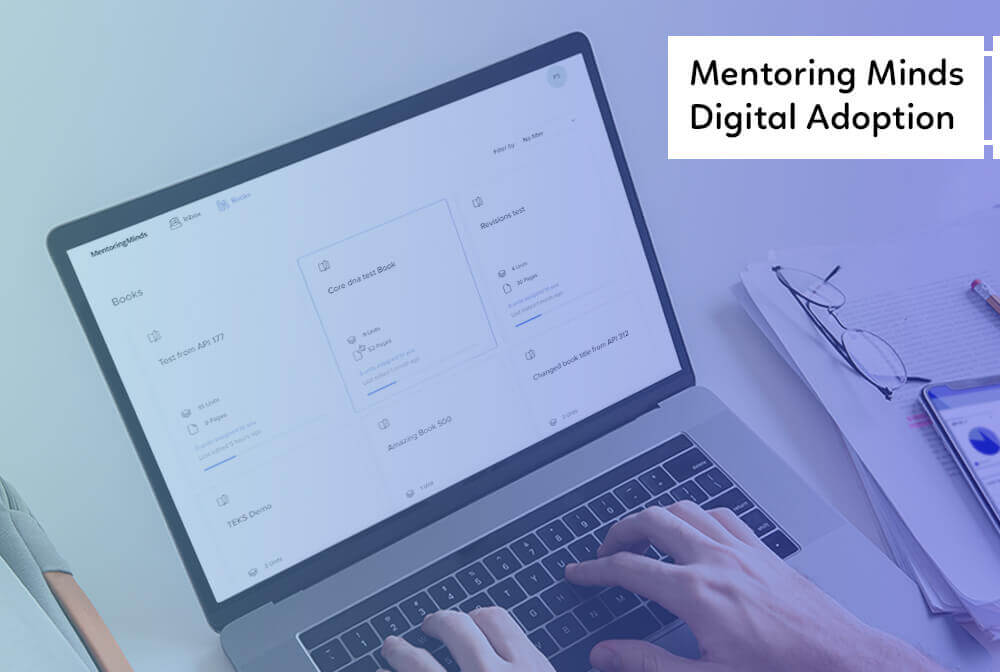
This also enabled the company to synchronize their print and digital resources so users could easily retrieve their data, edit and preview content.
From a content perspective, Mind Mentors now has content tagging and tagging features, specific interface for specific authors, reusable components and more.
IKEA And Augmented Reality
Augmented reality is probably the most underrated technology today. However, IKEA is leveraging the potential of the technology to the fullest by allowing customers to choose its products and offering them a glimpse of how they would look in their homes, virtually. This allows customers to know if their furniture preference goes with the home, color scheme, personality, tone and more.

Besides, IKEA is also bringing in further digital transformation with IoT and looking to build smart homes to reach out to newer market segments.
Bosch’s Headless Commerce
One of the most prominent Ecommerce solutions – Amazon – is not only conquering the B2C space but B2B as well. As it continued to gather traction across all sectors, what became evident to market players like Bosch was that customers would intend to witness a similar digital experience on their site as they would on Amazon.
So, the crucial challenge ahead of Bosch was that it had to cater to the unique requirements and experiences of regional vendors as well as maintain a holistic brand experience at global level. Dedicating individual CMS to each region and tailoring content is not just tedious but is complex as well.
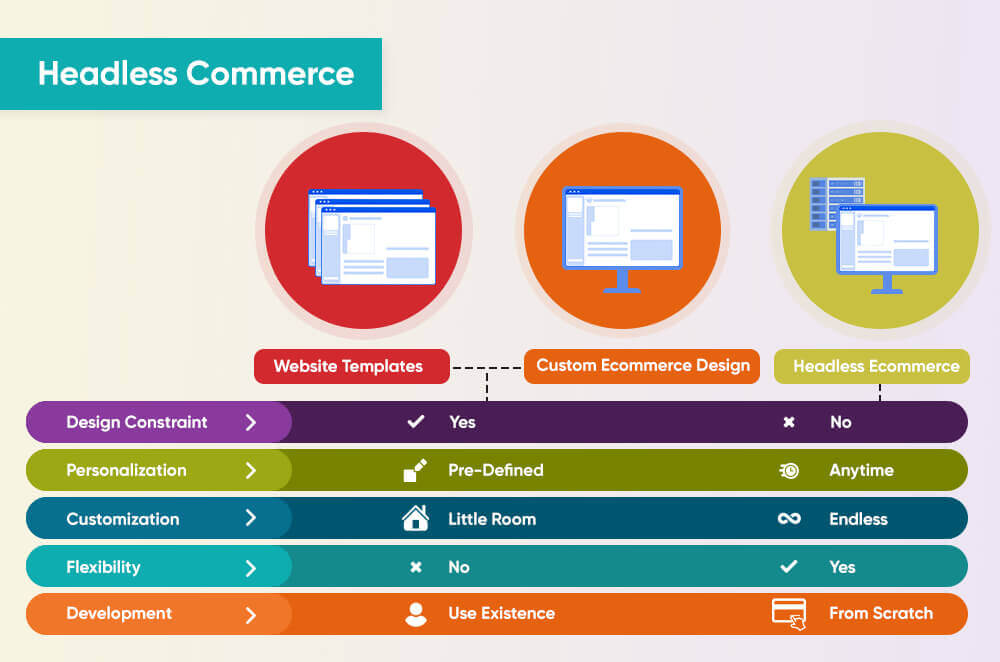
To bridge the gap between the two, Bosch brainstormed and came up with an amazing digital transformation strategy, wherein it rolled out something called Headless Commerce.
In simple words, headless commerce distinguishes traditional commerce and content management systems by disconnecting backend and frontend frameworks from each other. With this, Bosch no longer had to maintain standalone blogs for diverse regions but have one blog and personalize content, style, tone and approach depending on which region it was accessed from.
This was a major phase in the company as it took a giant leap from its conventional embracement of technology, which was mostly generic and from local levels.
Steinhoff’s Optimized Omnichannel Strategy
Digital transformation requires meticulous planning and defining of goals that are specific to your business. Lessons on how to do this and make digital transformation seamless and profitable can be learnt from Jamie Denby – Steinhoff’s Head of Business Transformation.
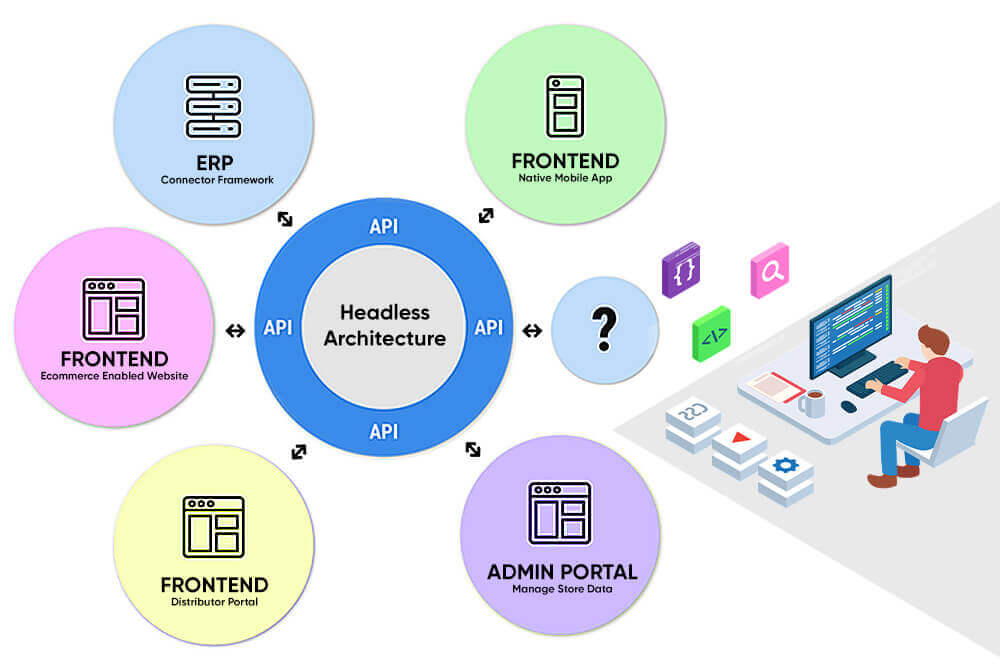
Before implementing digital transformation, he compared where the company was at present and where it intended to go in the coming years. This gave him a clear perspective of what specific goals were and what technological changes and implementations would take the company there. With omnichannel optimization at the fulcrum, Jamie identified that requirements like an agile environment, personalized product experience, standalone teams that don’t need micromanagement and conversion rate optimization were essential.
To achieve these, a platform powered by headless architecture was built and deployed. Through this, he paved the way for personalized products purchasing by offering distinct experiences to distinct products. He also deployed augmented reality in the ecosystem to give customers a glimpse of how their products would look like in their home, offices or other places they prefer. This enabled them to reach their goals they had on papers seamlessly.
Albertsons Data Analytics For Increasing Conversion Rates
Albertsons has been one of the pioneer grocery stores that established multiple channels for customers to shop groceries from. Since 2000, they have been leading the grocery eCommerce space always offering a little more than their competition.
However, one of the plaguing concerns they faced was that their search results threw products of little to no relevance to customers. This not only led to disappointment but increased their website’s bounce rates as well.
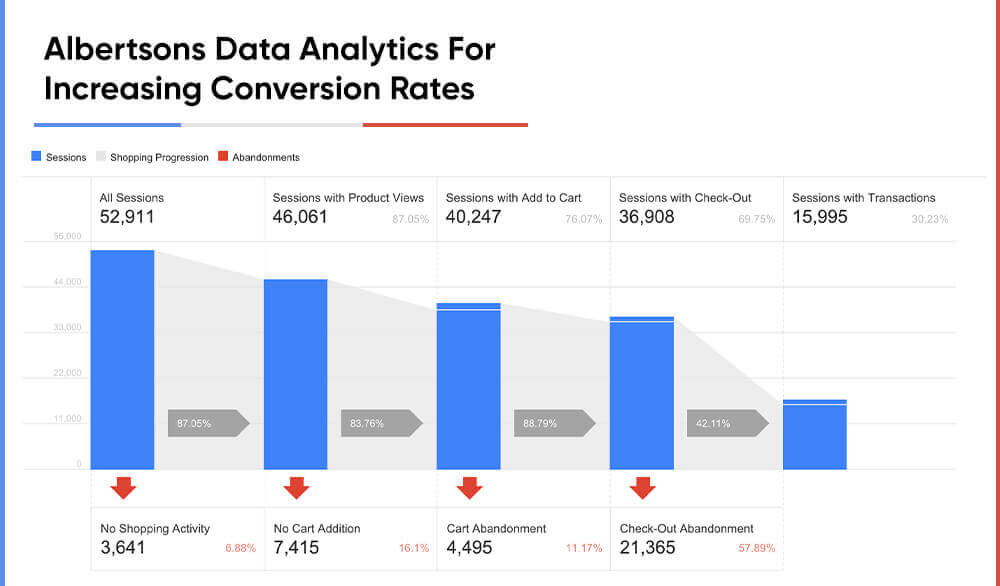
It was then that they decided to increase their basket-filling size and make way for more conversions and purchases. They deployed a search and merchandising platform that allowed customers to have an elevated and a more relevant search and explore experience on the website. With this, customers were able to retrieve results they were looking for and instantly add them to carts. The company also reveals that this led to a 25% increase in cart-filling time.
HD Supply Cracks The Search Traffic Code
HD Supply’s innovation stagnated at one point and it was pushed to an instance it had to deploy digital transformation strategies in its business. HD Supply’s Senior Product Manager, Brooke was poised with a challenge to revamp the entire website experience. With access to the entire website, she realized that their website lacked some of the most crucial features hidden filter options, unusable category navigation and more.
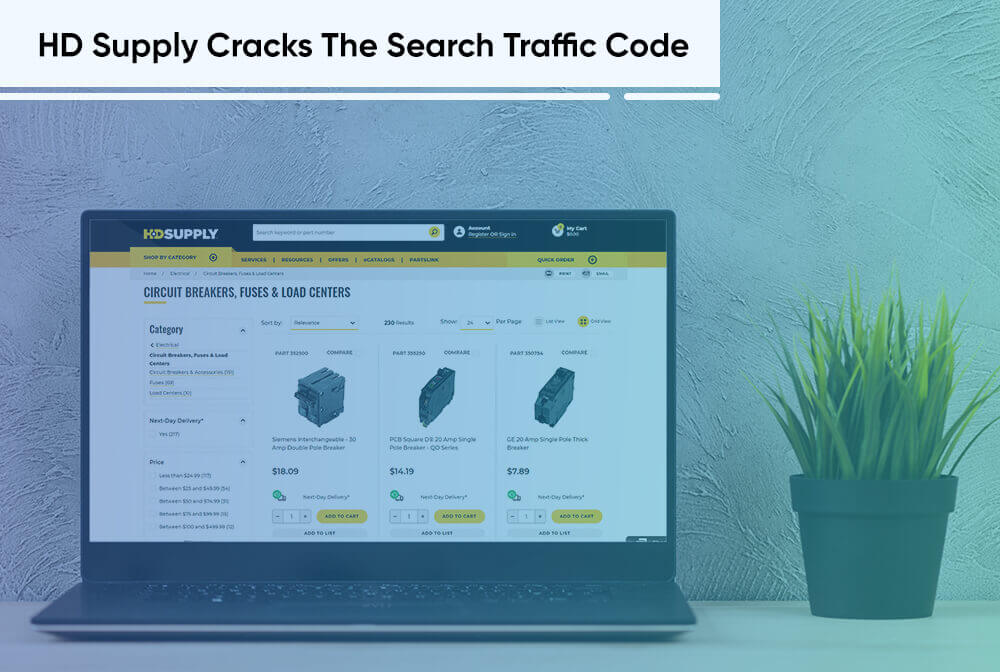
These stalled people from finding their products fast and checking out. So, they went on to add a feature where customers could add products (which have an image, price and part number) to their carts directly from the search bar. They also offered product suggestions to customers to make a better informed decision. Brooke revealed that this move enabled them to increase their revenues by 16%.
Wrapping Up
Digital transformation is inevitable and this is the only way forward for business of any size and shape. From sustenance to making profits, digital transformation is required for all aspects of smooth business operations.
If you’re still wondering if this is right for you, we recommend you go for digitalization consulting. This is the right time to evaluate your business, its standing and its future. Think about it and start gradually implementing digital transformation practices and concepts.
You would experience the difference.
To get started with digital transformation consulting, get in touch with us today.
